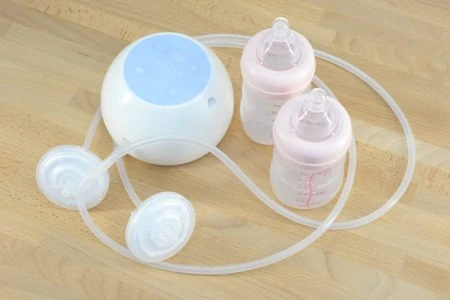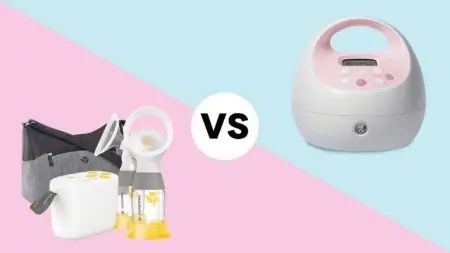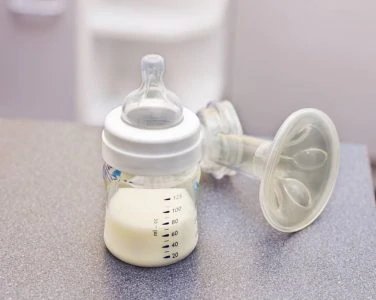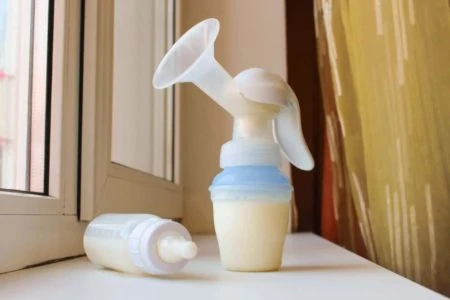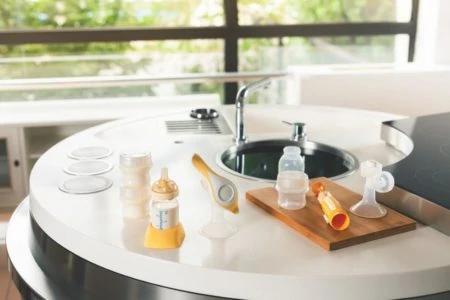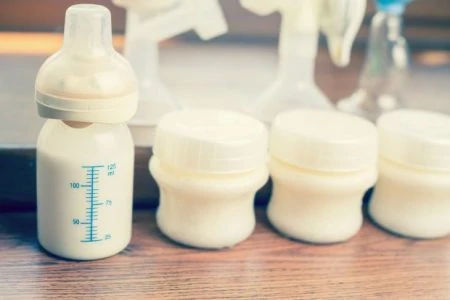Let’s be real: babies are expensive. If you are a pregnant mom planning to breastfeed, you are going to need a breast pump, but good ones aren’t cheap. The good news? You likely don’t have to pay a dime for one.
We know every dollar counts when you are a new mom. We also know navigating insurance websites and hold lines is the last thing you want to do right now.
We put in the hours researching the Affordable Care Act and insurance policies so you don’t have to. Here is your simple, no-stress guide to getting a free breast pump.
Key Takeaways
- It is usually free: The Affordable Care Act (ACA) mandates that most insurance plans cover breastfeeding equipment at 100% cost to you.
- Watch for exceptions: “Grandfathered” plans created before March 23, 2010, are the main exception to this rule.
- Medical suppliers vs. retailers: You generally cannot buy a pump at a big-box store and get reimbursed; you must order through a contracted medical supply company.
- Know your coverage: Plans vary significantly. Some cover manual pumps, while others cover high-end electric models. Always verify before ordering.
Do I Really Need a Breast Pump?
If you are nursing or planning on breastfeeding, having a reliable breast pump is a game-changer. While people often associate pumps with working moms, they are incredibly useful for stay-at-home moms, too.
Here is why keeping a pump on hand makes life easier:
- Emergency stash: You can build a freezer stash of milk for unexpected events.
- Supply boost: It helps in increasing milk supply during growth spurts.
- Health relief: Pumping helps resolve mastitis or clogged milk ducts.
- Freedom: You can actually go on date nights or run errands alone.
- Comfort: Empty your breasts when they are engorged but the baby is still asleep.
- Partner bonding: It allows your partner to handle overnight feedings so you can sleep.
Breast Pumps for Free? How Is This Possible?
The Patient Protection and Affordable Care Act (often called the ACA or Obamacare) changed the game for nursing moms. It includes a provision for breastfeeding support and equipment “for the duration of breastfeeding” (1).
The law requires 100 percent insurance coverage for these supplies.
This means that regardless of your deductible, co-pays, or typical out-of-pocket costs, your insurance company must cover the bill.
Are There Any Exceptions?
While most commercial health plans fall under this mandate, there are a few fine-print exceptions you should know about.
Take Note
Additionally, the law is vague about what constitutes “breastfeeding supplies.” One insurance provider might only cover a manual pump, while another will spring for a premium double-electric pump with a tote bag. Some may only cover a rental for a hospital-grade unit for a few months.
This is why checking the specific “Medical Necessity” guidelines of your policy is vital.
Can’t I Just Buy One at Target?
Usually, no. This is the most common mistake new moms make.
Insurance companies generally classify breast pumps as Durable Medical Equipment (DME). To get one covered, you usually have to order it through a specialized medical supply company (DME provider), not a standard retailer like Amazon or Walmart.
If you buy one at a retail store, your insurance might reject your reimbursement claim entirely.
Take Note
What Should I Ask My Insurer?
Before you order, a quick phone call to the number on the back of your insurance card can save you a headache. Ask these specific questions:
- Does my policy cover a breast pump for nursing mothers?
- Is my plan “grandfathered,” or does it follow ACA guidelines?
- Do I need a prescription from my doctor? (Most plans require this).
- Can I order the pump now, or do I have to wait until the baby is born?
- Which Durable Medical Equipment (DME) companies are you contracted with?
- Are there limits on the type of pump? (e.g., manual vs. electric).
- What is the dollar limit on coverage?
- If I want a premium pump, can I pay the upgrade difference out of pocket?
- Do you cover replacement parts like flanges, tubing, or milk storage bags?
The Best Breast Pump Suppliers
Since you likely have to go through a DME provider, we have rounded up the four most popular options. These companies handle the paperwork for you, contacting your insurance and doctor to verify coverage.
Many of these suppliers also offer “upgrade” options. This means if your insurance covers a base model (like a Spectra S2) but you want a cordless version (like the S1 or a Willow), you can pay the price difference using your credit card or HSA/FSA funds.
| Supplier | Brands Offered | Processing Time | Upgrades? |
|---|---|---|---|
| 1. Aeroflow Breastpumps | 10+ | 2 Days | Yes |
| 2. Edgepark Medical Supplies | 6+ | 7, 10 Days | Yes |
| 3. Lucina | 9+ | Varies | Unlisted |
| 4. Byram Healthcare | 8+ | 7, 10 Days | No |
Note: Processing times and brand availability can fluctuate. Always check the supplier’s website for the most current stock.
1. Aeroflow Breastpumps
Aeroflow is a favorite among moms because their website is incredibly user-friendly and they have excellent customer service. They also offer a “resupply” program where they contact your insurance to see if you are eligible for free replacement parts and bags monthly.
| Brands Available: | Medela, Ameda, Spectra, Motif, Lansinoh, Elvie, Willow, Evenflo, Zomee, and more. |
| Process: | Fill out the online form. Aeroflow coordinates everything with your doctor and insurer. |
| Length of Time: | Usually 2 days for verification, plus shipping time. |
| Cost: | Zero out-of-pocket costs for base models. Upgrades available for a fee. Free shipping. |
2. Edgepark Medical Supplies
Edgepark is a massive medical supplier. While their interface is a bit more clinical, they are contracted with a huge number of insurance plans, making them a safe bet if you have a smaller or regional insurance provider.
| Brands Available: | Medela, Spectra, Ameda, Freemie, Ardo, Lansinoh. |
| Process: | Complete the online form; Edgepark handles the verification and shipping. |
| Length of Time: | 8, 12 days on average. |
| Cost: | Free for covered pumps. You can pay extra for expedited shipping or premium pump upgrades. |
3. Lucina
Lucina specializes in women’s health and offers a wide variety of brands. They are known for having good stock levels even when other suppliers might be backordered.
| Brands Available: | Motif, Rumble Tuff, Medela, Spectra, Ameda, Freemie, Lansinoh, Hygeia. |
| Process: | Submit their order form. They verify coverage and ship upon approval. |
| Length of Time: | Ships upon verification. If you are pregnant, they generally ship 30 days before your due date. |
| Cost: | Free with verified insurance. Shipping costs vary. |
4. Byram Healthcare
Byram is another large supplier with a solid track record. They are a good option if you know exactly what you want and just want to get the order processed without upselling.
| Brands Available: | Medela, Ardo, Unimom, Ameda, Spectra, Freemie, Evenflo, Lansinoh. |
| Process: | Use the online form. They verify and ship. |
| Length of Time: | 7, 10 business days. |
| Cost: | Free upon approval. They generally do not offer upgrade options, sticking strictly to fully covered units. |
How To Get Your Free Pump: A Step-by-Step Guide
Most medical supply companies claim they do all the heavy lifting, but it is smart to understand your benefits yourself to avoid surprise bills. Here is the foolproof way to get it done.
1. Do Your Research First
Don’t just take whatever the insurance company sends you. Research the pumps on the market. Do you need a battery pack for travel? Do you want a closed system? Ask your lactation consultant or friends for recommendations.
2. Call Your Insurance (Optional but Recommended)
Have your member ID ready. Ask the rep for their name and a reference number for the call. If they say you are covered, and later you get a bill, this reference number is your golden ticket to disputing the charge.
3. Get Your Prescription
Most DMEs and insurance plans require a prescription from an OB-GYN or midwife. You can usually get this at your 28-week prenatal appointment. Some supply companies will fax your doctor to get this for you, but having a physical copy in hand speeds things up.
4. Place Your Order
Go to the website of the medical supply company that carries your preferred brand.
- Select your insurance provider from their dropdown menu.
- Enter your policy information and due date.
- Upload your prescription (if you have it).
- Pick your pump.
5. Wait for Delivery
Some insurance plans allow the supplier to ship the pump immediately. Others require them to wait until 30 days before your due date, or even until the baby is born. The supplier should notify you of your specific shipping timeline.
FAQs
Some hospitals will order your pump for after your baby’s birth but before you are discharged. You may want to check with the facility where you plan to deliver to see if this service is offered.
Editor's Note:
Michelle Roth, BA, IBCLCDon’t Leave Money on the Table
Breastfeeding is a labor of love, but it shouldn’t be a labor of debt. The ACA provisions were created to help moms like you give your baby the best start possible without breaking the bank.
Take a few minutes to check your eligibility and order your pump early. Once that baby arrives, you will be too busy counting toes and changing diapers to worry about insurance forms. You’ve got this, mama!
